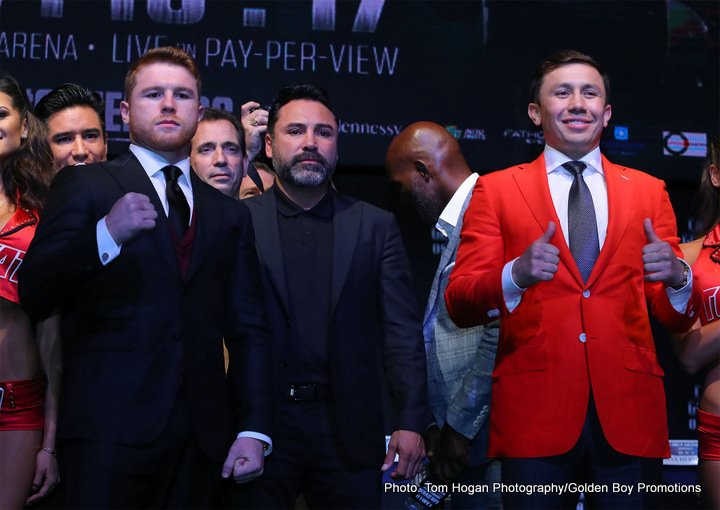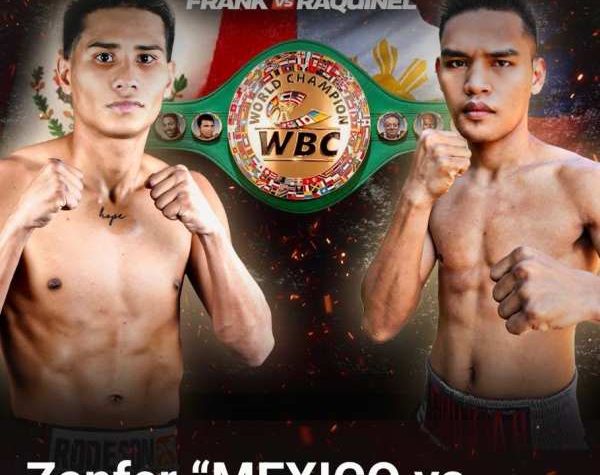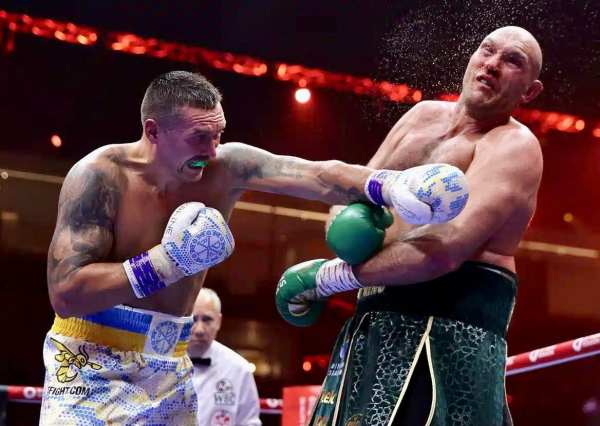

Boxingnews24.com
By Donavan Leonard: On September 16th, 2017, Saul “Canelo” Alvarez (49-1-1, 34 KOs) will attempt to climb a hill that few fighters have summited. In this era of multiple sanctioning organization champions, it is a common feat to pick up a belt in several weight classes. However, the feat of a welterweight or junior middleweight defeating the perceived “best” middleweight has only happened in a few rare instances.
Canelo will face Gennady Golovkin (37-0, 33 KOs) for a chance to join that small but elite group. Sugar Ray Leonard bested Marvelous Margin Hagler in 1987, and Sergio Martinez defeated Kelly Pavlik in 2010. Others have tried, among them many smaller men failing to topple Bernard Hopkins. Felix Trinidad, Oscar De La Hoya, Carl Daniels, Simon Brown, and John David Jackson are among the victims of Hopkins. Miguel Cotto did defeat Sergio Martinez in June 2014, but by that time there was a question of whether Martinez was still the top dog at middleweight. Martinez had beaten Martin Murray by a close and debatable decision in his bout prior to fighting Cotto. Between bouts he had also undergone several surgeries on his knees. Looking like a newborn fawn on unsteady legs versus Cotto, Martinez was by all accounts no longer “the man” at middleweight. By default, the title of “best middleweight” had passed to Golovkin, the destroyer from Kazakhstan who, by the time of the Cotto-Martinez bout, had amassed an 11-0 record in title bouts, winning all by knockout. Three years later, Golovkin has enhanced his standing, extending his record in title bouts to 19-0 with 18 knockouts. Meanwhile, Canelo has beaten the man who beat the man who beat the man. His win over Cotto gave him the proper title of “linear champion”, but in the eyes of many, the man called “GGG” is standing over the middleweight throne. This is why Canelo can remove all doubt as to who is king.
Canelo is in his physical and professional prime. At 27 years of age, he has taken very little punishment, and he has devoted himself to learning his craft. Despite the much-deserved maligning from critics for his “Canelo-Weight” of 155 lbs, the skill he has shown in the ring has been impressive. He has good hand speed, quicker than Golovkin, and this should allow him to connect first. That will be important, as it will allow him to control the tempo and distance of the bout. He also throws combinations. This is not an aspect that should be overlooked. Although the opponents he has faced recently certainly make throwing combinations easier (Liam Smith, Julio Cesar Chavez Jr.), Golovkin will be similar in that he will be right in front of Alvarez. Canelo works the body well, and will be looking toward finishing his combinations with the “gancho”, the vicious left hook to the liver. Golovkin has shown an amazing chin, but the question of how he takes it to the body will be asked and answered during this fight. Conversely, Canelo has shown a sturdy chin. Although he was rocked nearly seven years ago by Jose Cotto, he has not been wobbled since. He has not faced a murderer’s row of punchers, but he has shown an ability to not get hit flush. His parrying and upper body movement make him a difficult target. He also has the build of a fighter who can absorb punishment, should it occur. Golovkin will connect with punches, but if Canelo is quick to counter and move, he will force Golovkin to reset his feet, preventing him from being in the best position to land his power shots. Keeping GGG off-balance is the only way that Canelo can thwart his offensive prowess.
Canelo has successfully faced higher-quality opposition. This is not to say that the opponents that Canelo has faced would defeat all the opponents that Golovkin has faced. It means that they have displayed moves, prowess, and artistry within the ring that have helped make Alvarez a better fighter. From Shane Mosley to Floyd Mayweather to Miguel Cotto to Erislanda Lara, Canelo has seen top-flight pugilists in true fight situations. Liam Smith, Chavez, James Kirkland and Alfred Angulo are come-forward fighters, but not even one among the group could say they “had their moments” against Canelo. Neither the fire of Kirkland and Angulo, the size of Chavez, nor the “Canelo-lite” approach of Smith put Alvarez in danger. The one type that he has not faced, a responsible offensive stalker, is what he will be up against in Golovkin. While he has been facing less than elite competition, it would be a mistake to believe that he has not been preparing for Golovkin since the day he let the world know that “Mexicans don’t —- around.” He has sparred with Golovkin in the past, many years ago, and there is much film on Golovkin. There will be no surprises as to what he will encounter and he will game plan accordingly. Daniel Jacobs caught GGG unprepared, boxing quite differently from he had in the past. The movement, changing of stances, and fighting off of the back foot helped Jacobs stay safe, and reduced the number of incoming salvos. Alvarez can look to do something similar. By staying in the center of the ring and pivoting to prevent Golovkin from getting his feet set, Alvarez can use what he has learned from great fighters to counter, move, and work upstairs and downstairs to frustrate the powerful Kazakh.
The power of the judges. With boxing having no truly defined hierarchy of importance for scoring a bout (ring generalship? defense? clean punches?) judges can explain their cards to be “what they saw” with little threat of repercussion. Judge C.J. Ross scored Mayweather-Alvarez 114-114 in a bout that although competitive, certainly could not have been properly seen as a draw. Recent scorecards show that the official winner of the bout cannot be determined through the action in the ring sans a knockout. Maurice Hooker-Darlys Perez, Sergey Kovalev-Andre Ward I, and Rances Barthelemy-Kiryl Relikh, are examples of what happens when judges get it wrong. Whether through incompetence, corruption, a subconscious habit of viewing only one fighter, or the ambiguity of the way to score a fight, it is quite common for judges to score bouts contrary to what occurred in the ring. Often, it is in the favor of the better-connected fighter. GGG has never fought in Las Vegas, the highest number of PPV sales for a fight in which he was the “A” side in the United States is 170K, and his promoter did not win a gold medal in boxing in the Olympics for the United States. Canelo Alvarez is coming off a fight with Chavez that had 1.2 million PPV purchases. His promoter, Oscar De La Hoya, frequently puts on fight cards in Vegas. Canelo has fought in Vegas several times, and in close bouts, the scorecards have been kind. In addition to the 114-114 card turned in versus Mayweather, in his fight versus Lara one of the cards seemed to be a little-too-generous 117-111, and in his bout against Austin Trout, another competitive bout, one card read 118-110. Canelo being declared the winner in those bouts was not unconscionable; the margins were. This is not to imply that the bouts were fixed, but that if the fight goes to the scorecards, there is a history of judges being generous to Alvarez. If there is a controversial decision, it is much easier to imagine a scenario where Golovkin draws the short straw and Alvarez walks away with “all the belts”.





More News
Liu Gang, Brico Santig Join Forces
Highland’s Double Impact: August 18 at Lumpinee
Balajadia, Atencio in Action in Thailand